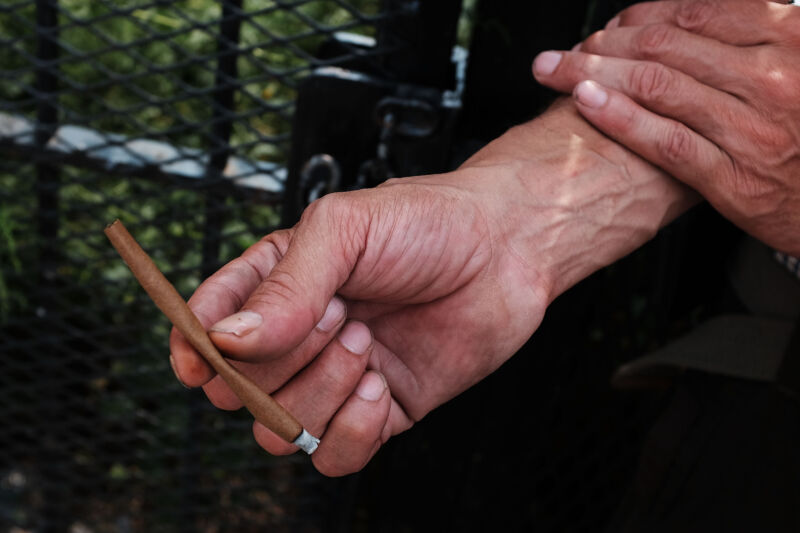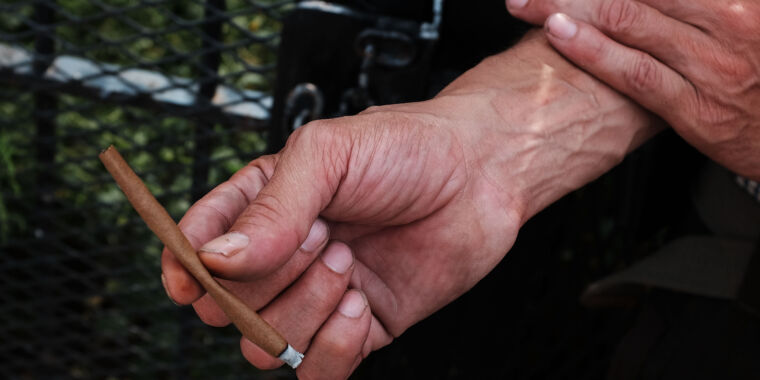
Just hours before President Biden unveiled a major effort to reform federal marijuana laws Thursday, the Centers for Disease Control and Prevention published a report highlighting some of the collateral damage of harshly criminalizing the relatively safe drug.
The report documented a mass poisoning from alternative marijuana products tainted with rat poison. The event—which severely sickened 52, killing four—isn’t the first or even the largest of such poisonings. In 2018, rat poison-laced fake products sickened nearly 200 in a multi-state rash of poisonings that also left four dead.
In the most recent cluster, health officials in Florida first began noting the cases in December of last year. And, based on the 2018 outbreak, they quickly linked the illnesses to synthetic cannabinoids (aka spice, K2, synthetic marijuana, or fake weed).
Synthetic cannabinoid products are often sold in small foil packages containing some sort of dried, shredded plant material that has been sprayed with lab-made, mind-altering chemicals meant to imitate components of marijuana. They’re also sometimes sold as liquids. The products are poorly regulated and can contain an ever-changing lineup of substances to sidestep evolving laws. Nevertheless, they’re often falsely marketed as safe, natural, and legal alternatives to marijuana, promising the same benefits as the real drug while being undetectable by drug tests.
Synthetic cannabinoids are dubious and can be risky, but products containing brodifacoum, a rat poison, are particularly dangerous. Brodifacoum is among a class of rodenticides called “superwarfarins,” and used to be the active ingredient in the rat bait “D-Con.” The toxic chemical is a long-acting vitamin K oxidoreductase antagonist, which blocks the activity of a specific enzyme. This results in an increase in an inactive form of vitamin K, which plays a critical role in blood clotting. Specifically, a protein in blood that is directly involved with clotting, prothrombin, is dependent on vitamin K.
Potent hit
Ingestion of brodifacoum can prevent proper clotting, leading to life-threatening bleeding. And it’s a long-acting drug, meaning poisonings can take months to treat. Brodifacoum has a half-life of 16 to 36 days, and researchers have observed it staying in the body for up to 270 days after acute exposure.
In the new report of the poisonings in Florida, Tampa-area health officials noted that most common symptoms of the poisonings were abdominal pain, peeing blood, and vomiting blood. And it was difficult to treat. “Many patients needed high doses of oral vitamin K1 (i.e., 150 mg/day), which required taking 30 5-mg tablets daily during hospitalization and for 3–6 months after discharge,” the authors noted.
They were also expensive to treat. The oral vitamin K1 treatments can run $65,000 or more per month. And testing for brodifacoum poisoning costs more than $750. The Florida officials noted that two-thirds of the patients were uninsured, and a private pharmaceutical company ended up donating enough vitamin K1 tablets to treat all 52 patients.
Officials don’t know for certain why anyone would put brodifacoum in fake weed, but researchers speculated that it could prolong or enhance the effects of synthetic cannabinoids. Brodifacoum has also been found tainting actual marijuana and cocaine.
The poisonings are yet another reason advocates for drug policy reform have called for legalizing and regulating marijuana, which is already happening in some states. Currently, 37 states and the District of Columbia have laws permitting medical use of marijuana, according to a report from the National Organization for the Reform of Marijuana Laws. Nineteen states and the District of Columbia laws permitting some recreational use, and 27 have partially or fully decriminalized some possession offenses.
On Thursday, President Biden made movements to reform federal laws by issuing mass pardons for federal simple possession offenses. He also directed federal officials to review the status of marijuana as a “Schedule 1” drug, a designation used for the most dangerous drugs.








